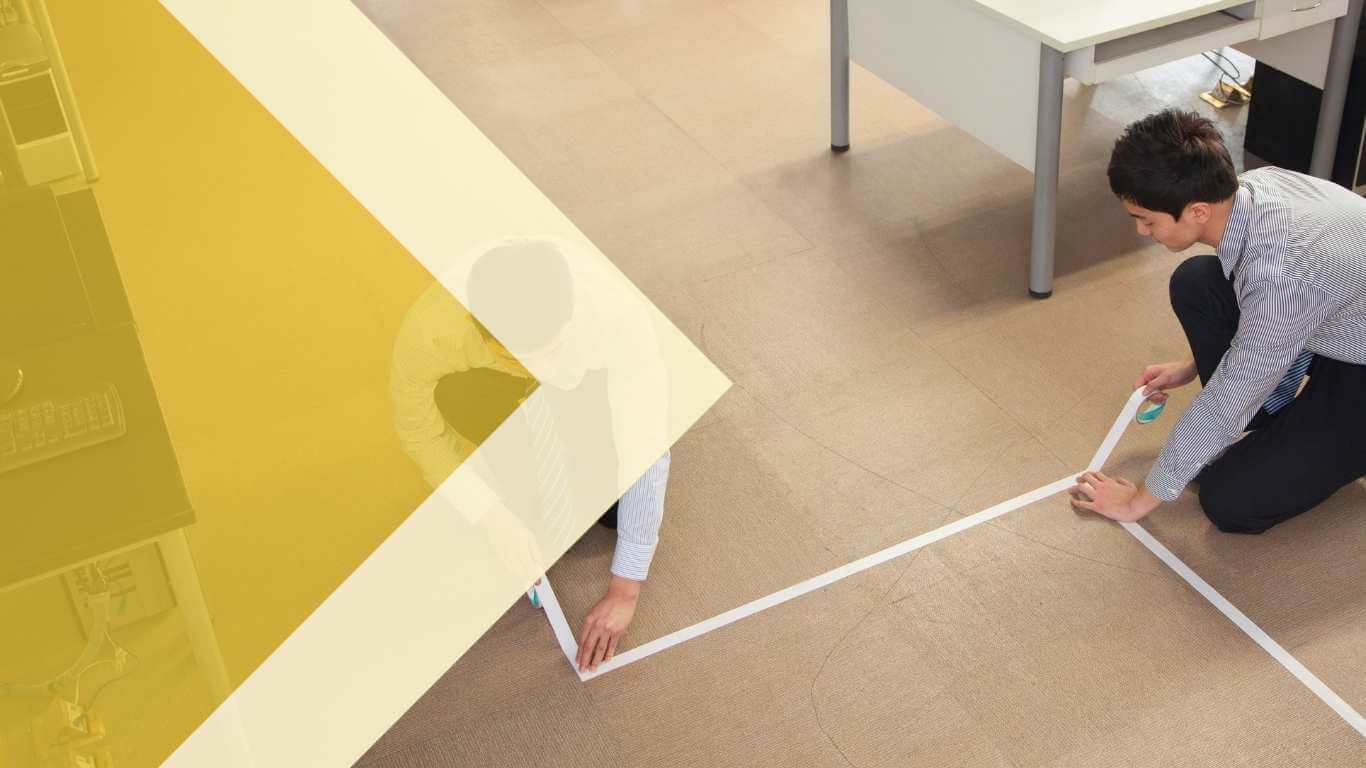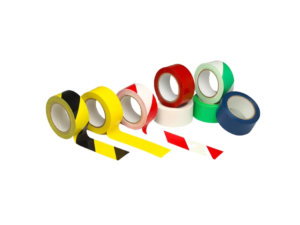Clear and concise signage starts from the ground up and that begins with floor marking tape. There are so many different types of communication in the workplace, it can often become confusing for employees and visitors.
Whilst is it important to ensure your signage meets Health and Safety obligations, it must encourage efficiency and productivity in the workplace. Communication of social distancing and one way systems are also imperative. With so many options, it can be difficult to know where to start.
Here at Safe Industrial, we can help advise what floor marking tape and kits will improve efficiency and help keep you compliant.
Why should I use floor markings?
There are many reasons why floor markers are great additions to the workplace. They are usually the most cost effective solution for communication in the workplace.
Floor marking tapes are ideal to highlight hazards, more so when they are used with floor graphics with internationally understood symbols. Not only due they avoid confusion but also help those whose first language may not be English.
The UK HSE (Health and Safety Executive) says: “All traffic routes shall be suitably indicated where necessary for reasons of health or safety.” By installing coloured tape to guide employees and visitors around the site, it helps aid the importance of one way systems and make safety signage more effective.
One of the major advantages of safety tapes is that it does not cause an obstruction and they are hard to miss unlike traditional signage.
What colour floor tape should I go for?
As floor tapes are universally understood and not language dependant, they are internationally recognised. Whilst there is no standardised colour coded system, there are industry norms when it comes to different colours
Red – danger (usually white/red zigzag) or an area of a factory designated for scrap materials
Yellow – traffic safety messaging, risk areas and individual work zones (often as a yellow/black zigzag)
White – storage areas and equipment zones
Orange – goods awaiting inspection or transit
Green – finished goods or recycling areas for certain materials
Blue – materials awaiting use or glass recycling areas
Black – production zones.
You will often see white/green zigzag floor markings commonly used for information purposes, such as where to find safety equipment or the best routes to walk.
What is the best way to use floor markings?
The best way to use floor marking tapes is to create a bespoke floor plan, based on your risk assessment and current operational patterns. The best strategic floor marking system is consistent across all your entire site or sites.
Avoid having ‘busy’ floor markings and too many colours in one place, as this can diffuse how effective floor signs are.
It’s important to communicate what floor markings mean in your workplace, so everyone can use them at a glance. This should be documented and reinforced regularly but especially within induction periods.
Preferably with a digital and physical map showing workplace organisational and safety information, that corresponds to your floor tapping system.
How to apply floor marking tape?
The next thing you need to know is how to apply floor marking tape properly and in a way that avoids constantly replacing your ground floor signage.
One key point in purchasing floor tape is to ensure that they are durable and hardwearing. There are a lot of low cost floor tapes on the market, however there are many which are not suitable for industrial settings.
To make it easier, we offer floor marking kits that come with a tape applicator. These can help give you a professional finish with straight lines
Shop our full range of floor marking tapes, floor signal markers and anti-slip floor tape. Safe Industrial has a wide range of floor safety products stocked in the UK available for quick delivery. Contact one of our floor safety specialists for more information


